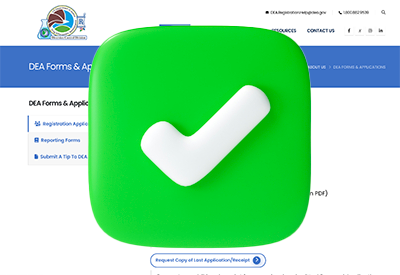Home » Fighting in the Trenches: A Practical Guide to Violence Risk Assessment and Management
Fighting in the Trenches: A Practical Guide to Violence Risk Assessment and Management
March 1, 2013
From The Carlat Psychiatry Report
Josh Sonkiss, MD
Chief Resident University of Utah Department of Psychiatry
Dr. Sonkiss has disclosed that he has no relevant relationships or financial interests in any commercial company pertaining to this educational activity.
Dealing with potentially violent patients is daunting, but we can play an effective role in assessing and reducing violence risk. In this article I’ll discuss some practical techniques to help you accomplish this in everyday practice.
Documentation of Risk Assessment
For starters, a systematic risk assessment should serve as a separately labeled narrative in any clinical note. What makes a systematic assessment superior to the notoriously unreliable “gut feeling” is its focus on clinically established risk and protective factors.
Since so many factors for homicide overlap with those for suicide, I combine these into a single assessment, and I make certain to specify both risk and protective factors. Rather than just writing a list, I select, weigh, and integrate these factors into an overall assessment of risk. For example, in an admission note I might write something like this:
Brought by police after domestic dispute. Risk factors: history of assault, alcohol intoxication, paranoid delusion involving partner, access to firearms, threatened suicide in emergency room. Protective factors: detained in structured environment. Based on these factors, the patient poses a high risk of harm to herself and others.
In addition to qualifying risk, the initial assessment identifies factors that clinical interventions can reduce or eliminate. At follow-up, risk factors should be fewer and the overall weight should have shifted to protective factors. A discharge risk assessment for the same patient might look like this:
Patient credibly denies suicidal and homicidal ideation, psychotic symptoms resolved, no longer intoxicated or withdrawing, receiving appropriate medication, improved relationship with partner, firearms removed from home, safety plan, psychiatric and chemical dependency follow-up in place, referred to anger management, future-oriented, and hopeful. Based on these factors, the patient no longer poses a high risk of harm to herself or others.
Whether in an inpatient or outpatient setting, risk assessment should be an ongoing process that is documented frequently—especially when there are changes in patient behavior, important life events, or changes in level of care.
Common errors in systematic risk assessment include omitting protective factors; forgetting to include individual risk factors (eg, precursors of past violent behavior by this particular patient), and failing to document the assessment in its own, separately labeled section of the clinical note.
Other Sources of Information
It’s risky to base your risk assessments only on what patients tell you. Past violence is the strongest predictor of future violence, and your best sources of accurate information may be caregivers and prior treatment records. If you can’t get collateral because of consent issues or administrative delays, at least document your reasonable efforts to obtain it.
The Internet offers a rich source of information that can assist in violence risk assessment. Publicly accessible court databases, newspaper articles, police blotters, and social networking sites can all yield helpful—and sometimes surprising—data. [Warning: Although I disagree, some psychiatrists believe it is unethical to use the Internet to gather information outside of forensic settings.]
Research suggests that perpetrators of violent acts are often driven by strong feelings of anger and resentment in response to narcissistic injury (Knoll JL IV, J Am Acad Psychiatry Law 2010;38(1):87–94). Although they’re not “official” risk factors, asking about potential narcissistic injuries like job loss or romantic rejection—and about revenge fantasies—may help identify some individuals with a high violence risk.
For high-risk patients, consider using a structured risk assessment tool like the VRAG, HCR-20 or COVR. (See “Measuring the Quiet Man” in this issue.) These should always be used to enhance professional judgment, not replace it.
A note about privacy and confidentiality: HIPAA is no help when you need collateral information to complete your risk assessment, your patient won’t sign a release, and his involuntary hold is about to expire. Situations like this can leave psychiatrists feeling stuck. A wise psychiatrist once told me “you can be sued for doing the right thing and you can be sued for doing the wrong thing, so you might as well do the right thing” (Frederick Houts, MD, personal communication). Until courts and legislatures provide more guidance, psychiatrists must decide what the right thing is using good professional judgment and well-documented clinical reasoning.
Classification of Violence Risk (COVR): available at www.parinc.com
Historical, Clinical, Risk Management (HCR-20): available at www.parinc.com
Psychopathy Checklist (PCL-R, PCL-SV, PCL:YV): available at www.mhs.com; background information and references available at www.hare.org/scales
Structured Assessment of Violence Risk in Youth (SAVRY): available at www.parinc.com
Sex Offender Risk Appraisal Guide (SORAG): available in Quinsey VL et al. Violent Offenders: Appraising and Managing Risk, Second Edition. American Psychological Association; 2005.
Violence Risk Appraisal Guide (VRAG): available in Quinsey VL et al. Violent Offenders: Appraising and Managing Risk, Second Edition. American Psychological Association; 2005.
Managing Risk
Psychiatrists must take action if they assess violence risk as high. Here is my general approach:
Duties to Warn and Protect
In most jurisdictions, duty to warn comes into play only when a patient makes a credible threat of serious harm to an identifiable third party. Though it fills clinicians with dread, warning is rarely necessary. This is because, at the risk of oversimplifying, hospitalization is usually a better way to discharge one’s duty to protect. Hospitalizing temporarily removes the threat, and release is usually predicated on a reduction in risk such that duty to warn is no longer relevant. (For a case example, see http://bit.ly/RmheCq)
Most states now have statutes that either allow or compel clinicians to make reasonable efforts to warn or protect potential victims. Requirements differ from state to state, so it’s important to know the law in your jurisdiction. For example, some states include threats to property, and some may require you to inform the police as well as the threatened person (see also Herbert PB and Young KA, J Am Acad Psychiatry Law 2002;30(2):275–281).
If you decide to warn, including the patient in the warning process may help minimize damage to the therapeutic alliance and the patient’s relationship with the person being warned.
What to Do About Guns
Whatever you believe about the right to bear arms, access to them increases the risk they’ll be used to violent ends. For that reason, I routinely ask patients if they have guns, then I document a firearm disposition plan that includes education about firearm risks and recommendations for reducing them.
Many patients won’t relinquish firearms altogether, so I often recommend placing them in the care of a trusted friend or family member. Any measure that increases the “activation energy” of gun violence is better than nothing. Alternatives include gun safes, trigger locks (I prefer the kind with a cable that threads through the chamber to make absolutely certain there isn’t a round in there), and simply keeping ammunition out of the house.
I usually frame my advice in terms of increasing safety for patients and for their families. Most respond well if I emphasize I’m not trying to take their guns away. Patients with children are often convinced by a reminder of accidental death statistics, and family members can be powerful allies in swaying the reluctant. Recommendations alone aren’t enough: It’s important to document the patient’s response and then follow up with a phone call or office visit to find out if the recommendations were followed.
Military psychiatrists and those practicing in certain states may be prohibited from asking patients about firearm ownership. Unfortunately, this is another situation where legal, ethical and clinical considerations may be at odds with each other, and psychiatrists must decide how to balance these conflicting demands in the best interests of their patients.
TCPR’s Verdict: Systematic violence risk assessment allows psychiatrists to integrate risk and protective factors into an overall estimate of risk. The same set of factors guides clinical interventions for reducing the risk of violent behavior. Psychiatrists can play an important role in protecting their patients and others by following some simple steps.
General PsychiatryDocumentation of Risk Assessment
For starters, a systematic risk assessment should serve as a separately labeled narrative in any clinical note. What makes a systematic assessment superior to the notoriously unreliable “gut feeling” is its focus on clinically established risk and protective factors.
Since so many factors for homicide overlap with those for suicide, I combine these into a single assessment, and I make certain to specify both risk and protective factors. Rather than just writing a list, I select, weigh, and integrate these factors into an overall assessment of risk. For example, in an admission note I might write something like this:
Brought by police after domestic dispute. Risk factors: history of assault, alcohol intoxication, paranoid delusion involving partner, access to firearms, threatened suicide in emergency room. Protective factors: detained in structured environment. Based on these factors, the patient poses a high risk of harm to herself and others.
In addition to qualifying risk, the initial assessment identifies factors that clinical interventions can reduce or eliminate. At follow-up, risk factors should be fewer and the overall weight should have shifted to protective factors. A discharge risk assessment for the same patient might look like this:
Patient credibly denies suicidal and homicidal ideation, psychotic symptoms resolved, no longer intoxicated or withdrawing, receiving appropriate medication, improved relationship with partner, firearms removed from home, safety plan, psychiatric and chemical dependency follow-up in place, referred to anger management, future-oriented, and hopeful. Based on these factors, the patient no longer poses a high risk of harm to herself or others.
Whether in an inpatient or outpatient setting, risk assessment should be an ongoing process that is documented frequently—especially when there are changes in patient behavior, important life events, or changes in level of care.
Common errors in systematic risk assessment include omitting protective factors; forgetting to include individual risk factors (eg, precursors of past violent behavior by this particular patient), and failing to document the assessment in its own, separately labeled section of the clinical note.
Other Sources of Information
It’s risky to base your risk assessments only on what patients tell you. Past violence is the strongest predictor of future violence, and your best sources of accurate information may be caregivers and prior treatment records. If you can’t get collateral because of consent issues or administrative delays, at least document your reasonable efforts to obtain it.
The Internet offers a rich source of information that can assist in violence risk assessment. Publicly accessible court databases, newspaper articles, police blotters, and social networking sites can all yield helpful—and sometimes surprising—data. [Warning: Although I disagree, some psychiatrists believe it is unethical to use the Internet to gather information outside of forensic settings.]
Research suggests that perpetrators of violent acts are often driven by strong feelings of anger and resentment in response to narcissistic injury (Knoll JL IV, J Am Acad Psychiatry Law 2010;38(1):87–94). Although they’re not “official” risk factors, asking about potential narcissistic injuries like job loss or romantic rejection—and about revenge fantasies—may help identify some individuals with a high violence risk.
For high-risk patients, consider using a structured risk assessment tool like the VRAG, HCR-20 or COVR. (See “Measuring the Quiet Man” in this issue.) These should always be used to enhance professional judgment, not replace it.
A note about privacy and confidentiality: HIPAA is no help when you need collateral information to complete your risk assessment, your patient won’t sign a release, and his involuntary hold is about to expire. Situations like this can leave psychiatrists feeling stuck. A wise psychiatrist once told me “you can be sued for doing the right thing and you can be sued for doing the wrong thing, so you might as well do the right thing” (Frederick Houts, MD, personal communication). Until courts and legislatures provide more guidance, psychiatrists must decide what the right thing is using good professional judgment and well-documented clinical reasoning.
Risk Assessment Tools
Classification of Violence Risk (COVR): available at www.parinc.com
Historical, Clinical, Risk Management (HCR-20): available at www.parinc.com
Psychopathy Checklist (PCL-R, PCL-SV, PCL:YV): available at www.mhs.com; background information and references available at www.hare.org/scales
Structured Assessment of Violence Risk in Youth (SAVRY): available at www.parinc.com
Sex Offender Risk Appraisal Guide (SORAG): available in Quinsey VL et al. Violent Offenders: Appraising and Managing Risk, Second Edition. American Psychological Association; 2005.
Violence Risk Appraisal Guide (VRAG): available in Quinsey VL et al. Violent Offenders: Appraising and Managing Risk, Second Edition. American Psychological Association; 2005.
Managing Risk
Psychiatrists must take action if they assess violence risk as high. Here is my general approach:
- Relax a little: Managing potentially violent patients can be stressful. Try to avoid overreacting to modest risks or hospitalizing to treat your own anxiety. On the other hand, don’t avoid necessary interventions out of fear they might lead to conflict. When in doubt, consult a colleague.
- Develop a safety plan: Discuss with your patient ways to reduce violence risk according to his or her unique circumstances. This may include avoiding triggers, using mindfulness, taking PRN medications, or asking for help, among many others. Include caregivers in the discussion, and document the plan in your notes.
- Change the level of care: Hospitalization may be the best option for high-risk patients who can’t convincingly assure us that they will be safe. For those who can, partial hospitalization or increased frequency of outpatient visits may be sufficient. Frequent telephone check-ins can assess symptoms and adherence to medications. For non-adherent patients, outpatient commitment may be a viable alternative in some states.
- Adjust medications: Symptoms of major mental illness should be treated. Antipsychotics and mood stabilizers can reduce emotional dysregulation and decrease risk of violence even in patients who are not psychotic or manic. For patients with chemical dependency, medications like naltrexone may increase both sobriety and safety.
- Be mindful of medication risks: Some people blame psychiatric medications for violence committed by people with mental illness. This may sound like blaming antihypertensives for heart attacks, but post-marketing surveillance has, in fact, associated some drugs with violent acts. You can search for information about the risks of certain drugs at the website for the Institute for Safe Medication Practices (www.ismp.org).
- Refer: Psychotherapy can be especially beneficial to patients with borderline or narcissistic traits (antisocial, not so much). Chemical dependency treatment is crucial for mitigating violence risk. Few psychiatrists refer to anger management, but I’ve seen such programs turn patients’ lives around.
Duties to Warn and Protect
In most jurisdictions, duty to warn comes into play only when a patient makes a credible threat of serious harm to an identifiable third party. Though it fills clinicians with dread, warning is rarely necessary. This is because, at the risk of oversimplifying, hospitalization is usually a better way to discharge one’s duty to protect. Hospitalizing temporarily removes the threat, and release is usually predicated on a reduction in risk such that duty to warn is no longer relevant. (For a case example, see http://bit.ly/RmheCq)
Most states now have statutes that either allow or compel clinicians to make reasonable efforts to warn or protect potential victims. Requirements differ from state to state, so it’s important to know the law in your jurisdiction. For example, some states include threats to property, and some may require you to inform the police as well as the threatened person (see also Herbert PB and Young KA, J Am Acad Psychiatry Law 2002;30(2):275–281).
If you decide to warn, including the patient in the warning process may help minimize damage to the therapeutic alliance and the patient’s relationship with the person being warned.
What to Do About Guns
Whatever you believe about the right to bear arms, access to them increases the risk they’ll be used to violent ends. For that reason, I routinely ask patients if they have guns, then I document a firearm disposition plan that includes education about firearm risks and recommendations for reducing them.
Many patients won’t relinquish firearms altogether, so I often recommend placing them in the care of a trusted friend or family member. Any measure that increases the “activation energy” of gun violence is better than nothing. Alternatives include gun safes, trigger locks (I prefer the kind with a cable that threads through the chamber to make absolutely certain there isn’t a round in there), and simply keeping ammunition out of the house.
I usually frame my advice in terms of increasing safety for patients and for their families. Most respond well if I emphasize I’m not trying to take their guns away. Patients with children are often convinced by a reminder of accidental death statistics, and family members can be powerful allies in swaying the reluctant. Recommendations alone aren’t enough: It’s important to document the patient’s response and then follow up with a phone call or office visit to find out if the recommendations were followed.
Military psychiatrists and those practicing in certain states may be prohibited from asking patients about firearm ownership. Unfortunately, this is another situation where legal, ethical and clinical considerations may be at odds with each other, and psychiatrists must decide how to balance these conflicting demands in the best interests of their patients.
TCPR’s Verdict: Systematic violence risk assessment allows psychiatrists to integrate risk and protective factors into an overall estimate of risk. The same set of factors guides clinical interventions for reducing the risk of violent behavior. Psychiatrists can play an important role in protecting their patients and others by following some simple steps.
Issue Date: March 1, 2013
Table Of Contents
Recommended
Newsletters
Please see our Terms and Conditions, Privacy Policy, Subscription Agreement, Use of Cookies, and Hardware/Software Requirements to view our website.
© 2025 Carlat Publishing, LLC and Affiliates, All Rights Reserved.


_-The-Breakthrough-Antipsychotic-That-Could-Change-Everything.jpg?1729528747)



